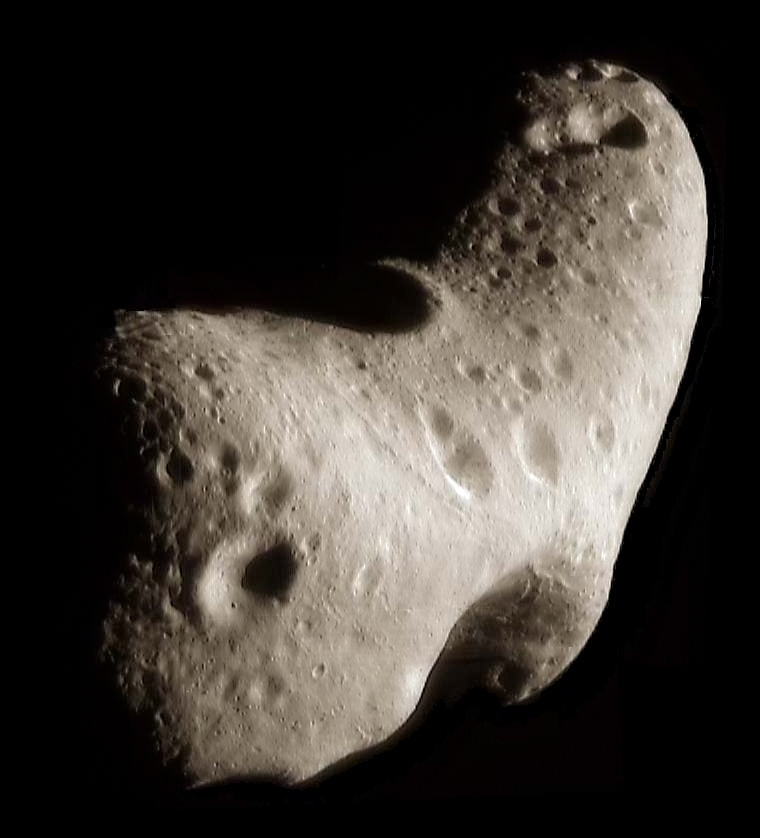Rotation, the rate of spin, is important as it allows us to gain insights into the surface nature and integrity of asteroids. Except for the larger ones, asteroids are mostly irregular sized and shaped objects and their rotations are often complicated by multi-axial rotation, high rotation speed, and rapid rotational precession (i.e. many asteroids ‘wobble’!). We have also seen (in our May blog) that non-gravitational forces can also affect their rotation.
The most efficient and common means by which rotation rates, and deductions of approximate shape, are made is by considering the ‘light-curve’ of the asteroid. A light-curve is the recording and analysis of the variations in brightness the asteroid exhibits. By considering the orientation of the asteroid with respect to the Sun and our observing site, and assuming the surface to be homogeneous (i.e. consistent), the surface area of the face of the asteroid pointing towards our observing point can be assessed in both relative terms and absolute terms if we take assumptions on the asteroid’s albedo.
Albedo is the proportion of light which is reflected from an astronomical surface. For example; fresh snow, being shiny and reflective, has a high albedo (reflectivity) of around 0.95 (i.e. 95%). Sea water is very dull and reflects only about 6%, and granite reflects only a small proportion of incident sunlight, typically ~30% (an albedo of 0.3).
But how can we measure an asteroid’s albedo? If we measured how bright it appears, we would not know if it was a large dull (low albedo) object, or a small shiny (high albedo) body.
Asteroid albedo is measured by using a combination of both visible light and infra-red wavelength observations. The visible light brightness of an object is strongly correlated to both the surface albedo and the size of the object. However, at infra-red wavelengths (which we feel as heat) the reflectivity is almost independent of the surface nature of the asteroid and depends much more strongly only on the size of the surface area. Thus, by using the infra-red observation to obtain an estimate of size, the visible light observations can be used to deduce the albedo. Within the main belt asteroids, albedo values are low. They vary from about 1% (for 1049 Gotho) up to around 70% (for 437 Rhodia). Most main belt asteroids however have relatively low albedos, with ~95% having albedos < 0.25.
If the light curve can be observed over a sufficient time period, cyclical patterns can be and are detected which allows astronomers to determine the rotation rates. This has enabled us to identify a general trend in spin rates compared to asteroid size; larger asteroids have longer rotation periods than smaller ones, with a very approximate linear relationship.
No known asteroid larger than 50km has a rotation period of less than 3.7 hours. The smaller asteroids generally rotate much quicker. 2008 DP4 is the fastest rotating main belt asteroid known (rotating once every 3mins 39seconds) but to date, the asteroid with the fastest rotation rate is 2010 WA, a small Apollo class object having a spin time of just 31 seconds.
For more details and statistics on asteroid rotational rates, the interested reader is referred to our book on the asteroids available here.
Highest Dimensions 16.8km. Image courtesy of NASA/NEAR mission; February 2000
In our April blog we saw that the surface level escape velocity for a hypothetical asteroid of diameter 10km would typically be of the order of 1.4m/second (depending upon density). If the spin rate of the asteroid exceeds this then any unbounded surface material (regolith) would not be constrained and would, literally, spin off into space. For the asteroid in our example, if the rotation rate was 3hrs, the surface rotation speed would be 2.9 m/s (i.e. almost twice that of the surface escape velocity) and from this we would deduce that a) there would be no surface regolith and b) that the asteroid has tensile strength and was not a rubble pile. If our asteroid’s rotation speed was slower than 6.2 hours, (at which the surface rotating speed would be 1.4m/s) then we could not make these deductions.
As the smaller/smallest of asteroids generally have rotation rates of two hours or less, it is considered that the vast majority of asteroids of dimension < 150m are single ‘structures’ with tensile strength. This is an important conclusion when we come to look at the consequences of asteroid collisions with the Earth.
Next month
We will look at spectroscopic observations of asteroids and how we can deduce their composition.


